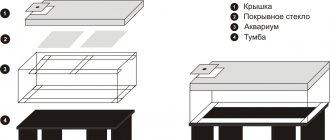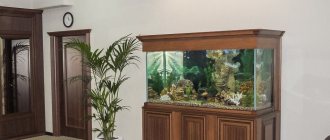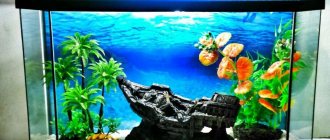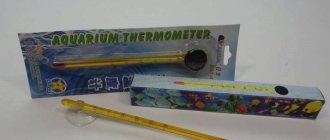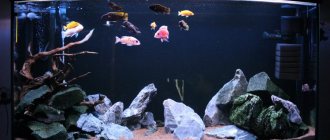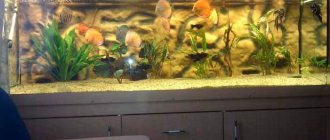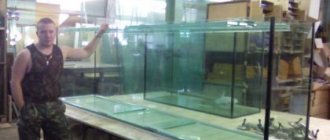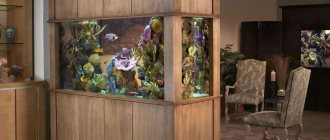- Aquarium: 60x28x30, 50l
- Light: Homemade, Two LED strips 9w each, 6000k, total power ≈ 1300 lm
- Filter: Homemade external 350 l/h, Internal 170 l/h
- Co2: Homemade system using citric acid and soda
- Water: Tap water
- Aquarium water indicators: Ph 7.5; Gh 15; Kh 10
Priming
- Neutral primer Hagen, 2-4mm
- Aquayer nutritional support
- Quartz sand
Fertilizers:
- Micro+ Aquayer
- Macro+ Aquayer
- Potassium+ Aquayer (First month after launch)
Plants:
- Hediotis Salzman
- Java Moss
- Pogostemon Helfera
- Anubias Barteri var. Nana Petite
- Alternanthera mini
- Bucephalandra sp. Kualakuayan
- Cryptocoryne Nuri Rosen Maiden
- Cryptocoryne Wendt
- Pistia
Population
- Rhodostomus
- SAE
- Shrimp Macrobrachium
- African clawed frog
- Neretina red-spot snail
Java moss - tropical jungle in the aquarium
Vesicularia dubyana
Pogostemon Helfera - the eastern star of aquarium design
Pogostemon helferi
Anubias nana-petite - an aquarium plant for the lazy
Anubias barteri var. nana "Petite"
Alternanthera Reinecka - the colorful charm of your aquarium
Alternanthera reineckii
Cryptocoryne nuri. Slowly revealing beauty
Cryptocoryne nurii
Cryptocoryne Wendt: an elegant accent plant
Cryptocoryne wendtii
Construction portal No. 1
Aquariums are a very exciting business.
It happens that people limit themselves to a modest aquarium and a couple of goldfish. However, more often than not, silent pets take up more and more of our time. The aquarium is gradually becoming a central element in the interior, so decorating it requires a lot of effort and, of course, imagination. The stores offer a huge amount of live and artificial algae, multi-colored bottom stones, shells and real sculptural compositions. Experienced aquarists prefer to make aquarium decor with their own hands.
For the inhabitants of the aquarium, the background is absolutely not important, but for grateful viewers, a beautiful picture is far from the least important. It creates a certain mood and emphasizes other elements of the underwater interior.
Some experts consider a black background, which is associated with the depth of the ocean, to be the most advantageous. Bright fish look fresh and unusual on it.
You can buy ready-made film at a pet store or create an original design and have it printed to order. In this case, the most important thing is to correctly apply the image to the glass. In addition, aquarium decor made from PVC film has a long service life.
What equipment is required?
Setting up an aquarium for a betta will not require expensive equipment, since these fish are hardy and unpretentious. But in order for your pet to be vigorous and healthy, the following conditions must be provided:
- Isolate males from their fellow tribesmen, otherwise they will constantly attack each other, dividing territory or females. Therefore, another name that bettas received is betta fish. And if two females periodically start fights to sort things out, then among male cockerels the fights end in death. To keep several bettas in one aqua tank, you need to install a partition. You can make it yourself from glass or plexiglass. Be sure to drill small holes in the partition for free circulation of liquid.
- Cover the aquarium with a lid or cover glass to prevent the fish from jumping out.
- To purify water you need an aquarium filter. It must be appropriate for the type and size of the tank and not create too active a current. The natural habitat of bettas is ponds with stagnant water, so the fish are not used to fighting fast currents. You can do without a filter, but then you will need to regularly clean the aquarium of waste from its inhabitants.
- To maintain the temperature, you will need an aquarium water heater with a thermostat and a water thermometer. Betta fish are kept at temperatures ranging from +24...+30°C. If the volume of the vessel is less than 15 liters, you should not install an aquarium water heater, because the water can overheat. In warm rooms where there are no sudden temperature changes, it may not be needed.
- Place a 5 cm thick layer of fine gravel on the bottom of the aquarium if you plan to plant plants, or 2 cm if you plan to use artificial algae. Gravel serves as a habitat for beneficial bacteria that maintain the necessary biobalance and purify the water. When choosing soil, give preference to fine gravel, as cleaning it will be less hassle. To create a corner of the underwater world, brown, gray, green or dark blue soil is more suitable, while pink, red and red shades look unnatural.
- Plants, driftwood and decorations not only decorate the aquarium and give it an aesthetic appearance, but also provide living conditions for bettas that are as close to natural as possible. Plants purify water from waste products, and decorations serve as shelter. When purchasing decorations and plastic plants, check to see if they have sharp edges that could injure fish.
Bettas are labyrinthine fish. They breathe atmospheric air, swimming from time to time to the water surface. They do not need aeration, but care must be taken to ensure that the surface of the water is not overgrown with floating plants and that a bacterial film does not form on it. Remove it with paper. The sheet is laid on a water surface and, by pulling one side, is lifted along with the adhered bacterial film. The process of installing and launching an aquarium for betta fish consists of several successive steps:
- Place the tank on a hard, level surface where it will not be exposed to direct sunlight.
- Install the filter, pour in fine gravel, previously washed with running water.
- Fill the tank with water to 1/3 of its volume. To avoid causing the soil to move, place a plate on it and pour water into it.
- Place decorations and plant plants in the ground.
- Fill the container completely with water. The distance from the surface of the water to the edge of the vessel should be 3 cm. If you use tap water, aquarium chemistry will help neutralize harmful substances.
- Attach a water heater and a thermometer near the filter.
- Before adding fish, you need to test the aquarium, that is, start it in fishless mode. Check water quality indicators. A pH level of 7 and ammonia and nitrate levels of 0 are considered safe for fish health.
- Take care of your betta's food. The fish are picky and omnivorous. Both dry and frozen food are suitable for them, but the majority of the diet should consist of living organisms.
An aquarium for betta fish with a small volume of about 15 liters can be used as a spawning tank. 10 liters of water are poured into it, a heater and driftwood are installed in which the female can hide.
Coconut house
Decorating in the form of a fish house is limited only by your imagination. Ready-made materials will help you create a real composition. Antique columns and ceramic vessels transport you to ancient Greece, a treasure chest with a skeleton tells the story of pirates, and a funny pineapple house reminds you of the funny cartoon “SpongeBob”.
In fact, making aquarium decor with your own hands is not at all difficult. Fish will certainly love the caves made from coconut halves. Go to the store and buy the biggest coconut. Then eat the entire contents and boil the empty shells for five minutes. If desired, additional holes can be made in the halves. The most important thing is that coconut will not disturb the microflora of the reservoir, and its fibers will appeal to some inhabitants.
Development of “Floating Bottom”
Each of the aquariums is manufactured using the “Floating Bottom” technology. Here the side walls of the product are glued around the perimeter, which reduces the load on the bottom. The technology also compensates for minor shortcomings when installing the aquarium on a not very flat surface. Thanks to this, the glass does not break.
In addition, a plastic frame is installed in each model, which distributes the load between the walls and the bottom. In this case, there is no need to install additional pads under the product.
Mysterious landscape
Another popular way to decorate is with real driftwood. This decor for an aquarium will be completely free. Just while walking in the forest, look for small pieces of wood of the most bizarre shapes.
Before introducing fish, driftwood must go through several stages of preparation so that the substances they secrete cannot tint the water and upset the acid-base balance. To a greater extent this applies to rowan and walnut branches.
So, bark and rot from driftwood can be removed in two proven ways: by prolonged boiling or soaking in fresh water. This way you will clean the surface of dirt, spores, germs, insects and bacteria.
Experts say that driftwood helps create natural conditions for fish. This decoration option will be very useful for ancistrus, for which the upper layers of the branches are necessary for normal digestion.
Do not use coniferous trees under any circumstances - the resin is very harmful to fish, and it is impossible to get rid of it. Oak secretes special enzymes that color the water.
Minimum size
An adult cockerel reaches a length of 6 cm and needs space to move freely. In 1.5-2 liters of water the fish has nowhere to turn around, it sadly stands still and moves little. In a small container it is not possible to place plants, maintain a stable temperature, install a filter, and especially decorations. In addition, it is more difficult to care for a miniature aquarium, because it needs to be washed weekly and the water changed, and this causes severe stress to the fish. In the natural habitat of cockerels, even in muddy, stagnant water, natural biochemical processes occur, as a result of which the liquid is cleared of poisons. It is impossible to achieve such biological balance in a small vessel. It quickly accumulates waste products, which poison the water, negatively affect the fish’s immunity and cause diseases. To ensure adequate conditions for keeping fish, the aquarium must have a minimum volume of 8-10 liters. You can place plants, driftwood, decorations, a small filter in it, and maintain a stable temperature. In good conditions, the fish is active, moves freely, and looks smart.
Stones
Making aquarium decor with your own hands does not require any special skills, and the simplest material is stone. You can build a beautiful grotto, slide or cave - use aquarium silicone to hold the smooth pebbles together.
Like wooden driftwood, stones need careful processing and boiling (about ten minutes). The decorations must be not only original, but also safe. Be sure to test your rocks for alkali to prevent altering the chemical balance of the water.
Apply a few drops of vinegar to the surface and observe the reaction. The appearance of hissing bubbles means that limestone is present in the composition, and it is better not to use such stone to decorate the aquarium.
Idea and hardscape
This is my third aquarium in my entire life. Moreover, the first two were 10 and 12 liters. You understand that you can’t really accelerate at such a volume.
The more I became interested in aquascaping, the more obsessive the thought of a serious project became. The turning point was a trip to Albania.
In Albania, I saw enough beautiful landscapes and was very inspired to create an aquascape.
The decision to make a new aquarium came right on the trip and I started collecting various stones and driftwood. I brought about half of all the decorations from Albania.
Upon arrival, I didn’t waste time - I bought an aquarium, bought more decorations and began to glue the hardscape.
A hardscape is a gorge intertwined with roots and snags.
All the decorations are glued together. I glued it with super glue and cotton wool. I stuck cotton wool between two decorations and soaked it in super glue. Holds up very securely.
I made different levels and terraces from stones and driftwood; it took about 10 tubes of super glue to glue them together. Hardscape is the longest part; I did it in the evenings for about a month.
Thanks to reliable gluing, the stones hold well and do not fall off.
An aquarium in the wall is a piece of the sea in your home
The aquarium has been known to mankind for thousands of years. Even in ancient China, it was noticed that the contemplation of peacefully swimming fish brings not only aesthetic pleasure, but also calms. The lazy movements of the fins, the dim light and the quiet sound of the water all have a calming effect.
Today, an aquarium serves not just as a home decoration, but rather as an entire design solution that gives the finishing touch to the entire interior. Square, round, rectangular, the flight of fancy knows no bounds in choosing a shape. The placement is also varied: now it does not stand in splendid isolation on an old cabinet, but looks out importantly from a wall or niche, or surprises the eyes of guests, being built right into the furniture.
A built-in aquarium will give joy and tranquility
Interior ecosystem
A relatively new, but already very popular direction in design is the integration of biology and technology. The essence of the concept is to use natural materials to design and create objects. It is difficult to understand what exactly brought artists “back to nature” - probably the total urbanization of humanity.
Elements of biodesign in the interior can be any pieces of furniture that are made from natural materials, as well as vertical and horizontal compositions from various plants. One of the most interesting and spectacular options for biostyle is aquabiodesign. Modern technologies make it possible to create incredible aquarium compositions of any size.
An aquatic designer can recreate magnificent seascapes using natural stones, dry elements of trees and colorful fish.
Comfort for little inhabitants
However, we should not forget that the aquarium is inhabited by living creatures, and for their prosperous existence it is necessary to create comfortable conditions. You will need special equipment to supply small residents with air, heat and light, and you will be faced with a new task of how to place all the auxiliary devices as discreetly as possible from prying eyes. To do this, they resort to the services of companies that develop individual projects. But if you decide to make an aquarium in the wall yourself, do not forget a few important rules.
What to choose?
You should not get cockerels based on immediate desire. It is cruel to condemn a fish to the most difficult living conditions just because it is able to withstand them for some time. Before purchasing a betta, you should prepare everything you need to keep it. Choose the best or best aquarium you can afford. If the container does not fit, you are unlikely to purchase a new one. Avoid round vessels and aquariums with waterfalls: the fish will not be comfortable in them. Pay attention to the classic rectangular, square, polygonal and panoramic tanks. They are practical, do not harm fish and are convenient for observing the life of underwater inhabitants.
Types of aquariums
Built into a wall niche
It’s worth saying right away that an aquarium can only be built into a wall that is not load-bearing. If you neglect this issue, you can get a fairly large fine. So if you want to make an entire wall aquarium in a panel house, most likely you will not succeed.
The selection of inhabitants for an aquarium built into a wall niche must take into account the fact that the water container will be long and narrow; not every breed of fish can live in such conditions. Therefore, choose small fish or individuals with an elongated body. Due to difficult access, plants should be chosen artificial or those that do not require careful care and frequent feeding.
Aquariums built into a niche most often have a back wall covered with a decorative background. The volume can reach 1000 liters, but you won’t be able to service such a large product yourself; you will have to resort to the services of professionals. To avoid unnecessary costs, reduce the volume to 100 liters. By framing the aquarium with a beautiful frame, you will get a real living picture without unnecessary maintenance problems.
Sometimes aquariums can reach a volume of up to 1000 liters
Built into the partition
An aquarium in the wall between rooms is called through, or built-in “through the light”. An aquarium that is transparent on two or even three sides looks extremely impressive in the interior, but has a number of disadvantages.
Continuous filtration, ultraviolet sterilization and frequent water changes are required. Otherwise, all the fish waste will be visible, which will significantly spoil the appearance of the aquarium.
Stock only with stress-tolerant fish species. Failure to comply with the rule will lead to the death of small creatures, which vitally need to hide from view in secluded places, which is impossible if their house is visible from all sides.
make a partition
So we decided to make a partition in the aquarium so that there would be a general circulation of water, but no one - not even the smallest shrimp could get across - we need it measuring 42 cm by 21 cm, how can we arrange this?
and where you can get the material - for example, thin plexiglass on a budget. And if there is a frame, and the frame is covered with cellular fabric, such as a mosquito net or the kind that is used for curtains, I don’t remember what it’s called. You can choose almost any cell size.
Kromsator I already thought of this idea yesterday, it’s just that the mesh in the aquarium somehow looks sad, but apparently I’ll have to do it that way
hee, and the tulle in the aquarium is funny, especially if you choose a lace pattern, such a cozy aquarium with curtains
Modified 4/15/08 by k0shka
Why a partition? Maybe a floating depositor made of transparent plastic, and thread it somewhere to the back wall so that it doesn’t become an eyesore. True, this decision can no longer be called budgetary.
What is better to make a partition in an aquarium from (mesh or enclosed glass)? And how?
I have 2 aquas (50 and 150 liters) separated by a plexiglass partition. I lined the grid with a felt-tip pen and drilled holes with a drill. Looks good. The design of the aqua is not spoiled.
Here is one example (glass with holes on the left)
Here is the second example, plexiglass on the right:
And another example:
DIY aquarium in the wall
Let's take a brief look at how to make an aquarium in the wall between rooms with your own hands.
- Clean the wall of facing materials, plaster and putty. This will make the process of further work easier.
- Calculate the size of the hole for the aquarium, and using a special saw for gas silicate and expanded clay blocks, start cutting. Remember that the future hole should be several centimeters wider than the aquarium capacity, and ten centimeters higher, for laying communications.
The hole for the aquarium needs to be made a little wider
- Be sure to reinforce the cut opening with a metal plate. Its length must be greater than the capacity being installed, and be located on the side blocks. This precaution will prevent excess shrinkage of the blocks.
- We are building walls for electricity wires.
- We finish the edges with any material (preferably rubberized), which can be easily painted with oil paint. The opening is ready!
The opening for the aquarium must be strengthened
Carbon dioxide supply
The Co2 is supplied using a soda/citric acid system that I designed. The reagents last for about a month and a half. From what I did myself, this system is the only thing I regret. It would be better to buy a cylinder, which I will do soon.
I received a defective pressure gauge that was poisoned by carbon dioxide. Not much, but the pressure was constantly dropping. After the second recharge of the reagents, the lids from Aliexpress were severely cracked. It's good that I noticed this, otherwise it would have been kaboom. I had to order new covers from a person who casts them himself; the thickness of the plastic is 5mm.
In general, I strongly do not recommend assembling homemade Co2 systems using lemon juice, much less mash. There is no pleasure from this, and reliability leaves much to be desired.
Useful design tips
Consider the interior features when choosing vegetation, decorations and types of fish. Consider the color scheme especially carefully, because changing an unsuccessful color combination in a 1000 liter container will be very difficult. An aquarium built into the wall between rooms should be arranged neutrally in order to fit into the design of the two rooms.
If you want to make a small aquarium opaque so that you cannot see through it into another room, simply install a partition in the center. Just remember to leave a few holes for the fish to move around.
If the aquarium is installed in an interior partition, take into account the interior features of the two rooms
When installing an entire wall product, or planning to make an aquarium in the wall with your own hands, weigh the pros and cons. It is best to get advice from professionals first. And most importantly, an aquarium is not only an interior decoration for many years, but also painstaking work. Only by devoting time and attention to it, you will get a beautiful result.
Ideal volume
If you want to provide your pet with ideal conditions, purchase an aquarium for a betta of a traditional rectangular classic shape with a volume of 20 liters. This amount of liquid is necessary for one fish: excess water will not spoil, it is easier to maintain the biobalance of the aquatic environment and a stable temperature. You will be able to place more plants located on the ground, floating on the surface of the water, in its thickness, and install decorations (grotto, driftwood, shell). Such a reservoir looks much more elegant and natural, and can compete in beauty with a sea aquarium or a shrimp tank.
Accommodation requirements
Where to place your home underwater world? When making a decision, do not forget to be guided not only by your wild imagination, but by basic rules that will provide the inhabitants of the aquarium with comfortable living conditions.
Never install the aquarium in direct sunlight!
Whatever your aquarium is, place it in a dark place in the room, since bright sunlight can be harmful to the health of the fish; in addition, from excessive lighting, microscopic green algae multiply several times faster, covering the inner walls of the vessel and everything in it. be there. Do not place aquariums on windowsills or near windows, this can be harmful to the fish. Heating up during the day and cooling down at night, a sharp temperature difference will be created in the vessel, which its inhabitants will not be able to withstand.
If the room in which the aquarium will be located is on the south side of the house, it should be placed at a distance of 2 - 2.5 meters from the window. It’s better to place the “water home world” on the eastern side of the apartment. Place the aquarium near an accessible food source, as from time to time the fish will need additional artificial lighting with fluorescent lamps: during spawning and during periods of vitamin deficiency.
Also keep in mind that the location of the aquarium should be free of drafts, smoky rooms and heating devices. Do not set up an aqua corner near electrical appliances and pianos, as fish do not like unnatural vibrations and do not tolerate the influence of an electric field.
Covers for Biodesign products
Another aquarium accessory is lids. They are processed using modern equipment, which allows for minimal gaps in the structure. These accessories look attractive, and when opened, they are conveniently fixed in special grooves. On the inside they are covered with a white reflector. Thanks to this, the illumination of the aquarium increases by 90%. When servicing or decorating the container, the top cover is easily removed and the lamp is removed.
Lamps "Biodesign"
When considering accessories for aquariums, one cannot help but mention Biodesign lamps. The profile of such a product is made of aluminum. It is durable and tough. The device has a hermetically sealed closure system. The lamps do not bend under the influence of loads, and this allows even heavy objects to be placed on the aquarium lid. The design is ideally protected from moisture and equipped with sealed lamp holders. The luminaires are illuminated by electronic ballasts, which increases the service life of the lamp and increases the light output.

